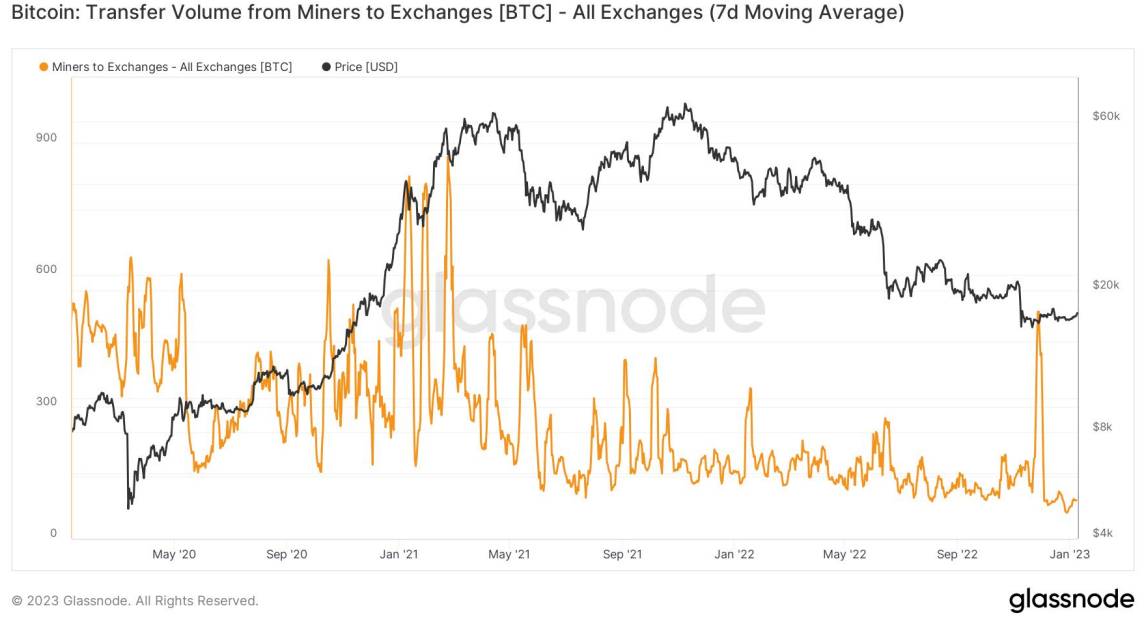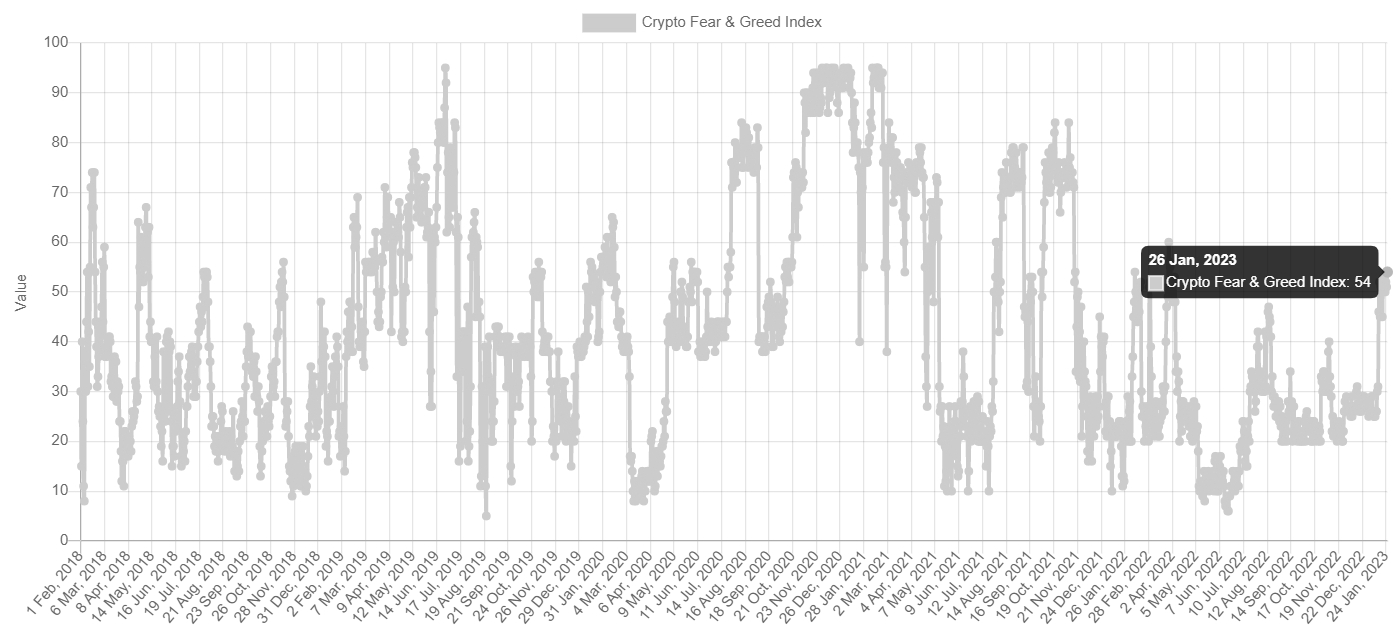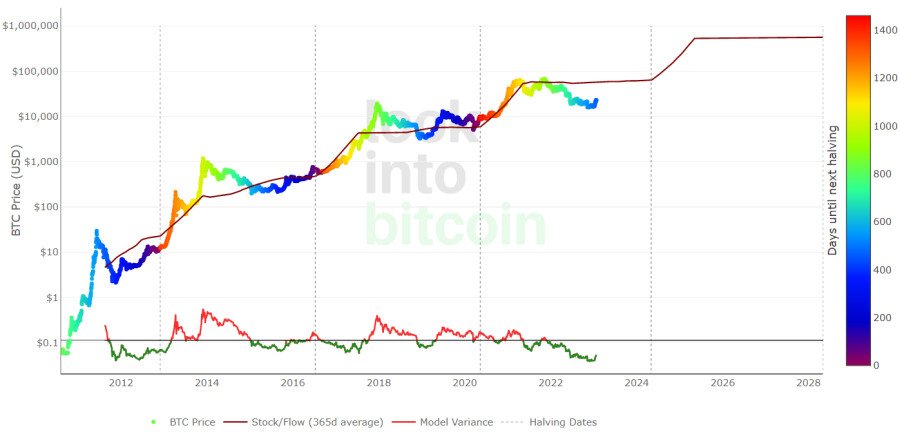Bitcoin Miner Sales Slump to Three Year Lows as Capitulation Risks Fade – What Does This Mean For The BTC Price

According to data cited by Bitfinex analysts earlier this week, Bitcoin miners are slowing the pace at which they sell the world’s largest cryptocurrency by market capitalization. Bitfinex, citing on-chain data from crypto analytics platform Glassnode, said that BTC flows from miner wallets to exchanges, said “selling is at a three-year low”.
“It is a potential indication that miners are now either already transitioned or in the process of transitioning to a source of buying pressure,” the analysts continued, before adding that miners might be “hodling their bitcoin because they anticipate further (price) rises”.

When Bitcoin miners move their BTC to exchanges, it is generally assumed they are doing this in order to sell them eventually. So lower Miner to Exchange flows can be viewed as a proxy for lower Bitcoin miner BTC sales.
Bitcoin miners are tasked with providing the computing oomph to power Bitcoin’s decentralized, permissionless, peer-to-peer and blockchain-based payments network. They are rewarded for their efforts with newly minted Bitcoins. Miners are one of the most important Bitcoin market players, thus signs that sell pressure from this market segment is generally viewed as a bullish indicator for the BTC price.

Another Signal That the Bitcoin Bear Market is Over?
There has been growing excitement in recent weeks in light of the latest Bitcoin rally (BTC is up close to 40% this month and back in the $23,000 area) that the bear market of 2022 might now be over. Certainly, with the bulk of Fed tightening having seemingly already happened, risks are tilted towards an easing of financial conditions in 2023 rather than a repeat of 2022’s harsh tightening, a historically bullish macro backdrop for cryptocurrencies.
And miner to exchange flows at three-year lows is just one of many on-chain and technical indicators that have been flashing positive signs that Bitcoin may be entering a new Bitcoin market. As discussed in a recent article, an increasing confluence of technical and on-chain indicators tracked by Glassnode analysts in their “Recovering from a Bitcoin Bear” dashboard are flashing green.
At present, six of eight indicators are consistent with the start of a market recovery, with a seventh likely also to soon start flashing positive signs. Elsewhere, Bitcoin is currently a “generational long-term buying opportunity” according to six on-chain metrics cited by crypto research-focused Twitter account @GameofTrades_. These metrics include the Accumulation trend score, Entity-adjusted dormancy flow, Reserve risk, Realized price, MVRV Z-score and Puell multiple.
Bitcoin: 6 on-chain metrics calling for a generational long-term buying opportunity
— Game of Trades (@GameofTrades_) January 23, 2023
A thread 🧵
Elsewhere, the widely followed Bitcoin Fear & Greed Index recently moved back into neutral territory (i.e. above 50) for the first time after a prolonged spell of Fear and Extreme Fear. A lasting recovery back into neutral often comes at the beginning of the next Bitcoin bull market, such as in early 2019 and then again in mid-2020.

Analysis from crypto-focused Twitter account @CryptoHornHairs made a jaw-dropping observation that Bitcoin is following almost exactly in the footsteps of a near-four-year market cycle that it has been following for the past more than eight years. After bottoming last November, Bitcoin may rally for another nearly 1000 days, the analysis suggests, before entering its next bear market in 2025.
$BTC #Bitcoin
— HornHairs 🌊 (@CryptoHornHairs) January 12, 2023
2015-2017 bull market: 1064 days
2017-2018 bear market: 364 days
2018-2021 bull market: 1064 days
2021-*current* market low: 364 days
Days left until the top if we just carbon copy the cycle timeframe again: 1001 days pic.twitter.com/KoNZxJRuy5
Finally, a widely followed Bitcoin pricing model is sending a similar story. According to the Bitcoin Stock-to-Flow pricing model, the Bitcoin market cycle is roughly four years, with prices typically bottoming somewhere close to the middle of the four-year gap between “halvings” – the Bitcoin halving is a four-yearly phenomenon where the mining reward gets halved, thus slowing the Bitcoin inflation rate. Past price history suggests that Bitcoin’s next big surge will come after the next halving in 2024.





